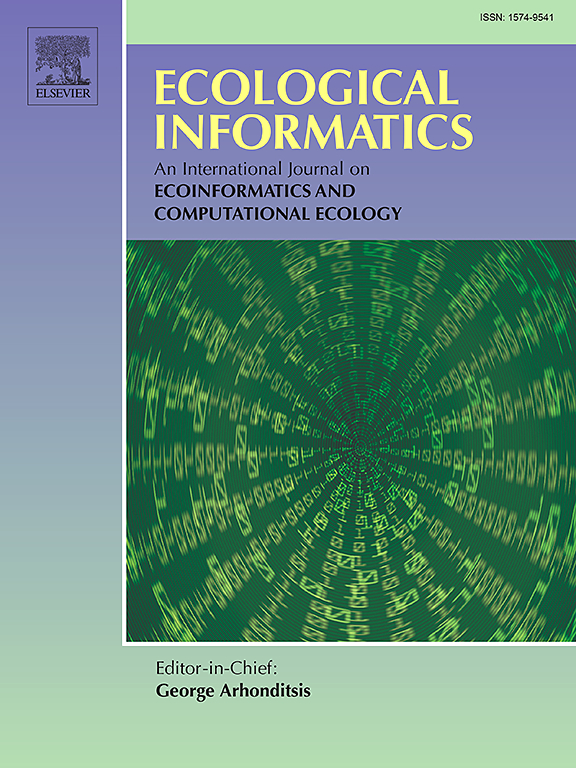支持海上风电发展:在数字航空调查中自动化数据分析,以加强野生动物保护和调查效率
IF 7.3
2区 环境科学与生态学
Q1 ECOLOGY
引用次数: 0
摘要
欧洲预计将在2024年至2030年间安装260吉瓦的新风电,其中大部分是海上风电,因此有效的环境影响评估(eia)至关重要。法规要求在开发前每月进行24次空中数字测量,并在施工期间和施工后进行持续监测。这产生了大量的生态数据。我们提出了一个自动化系统,大大减少了最劳动密集型任务所需的时间:筛选图像以识别物体或个体以进一步进行物种分类。这个过程从几个月减少到4小时的调查时间。在一个为期15个月的案例研究中(排除一个月用于测试),该系统达到了97.9%的准确率,优于人工筛选(68.75%),并且消除了99.13%的帧,无需人工审查。鸟类检测与人工操作相匹配,但仍然受到当前调查条件和图像分辨率的限制。关键是,我们发现通常假设的2厘米地面采样距离(GSD)在调查帧之间不一致,由于相机角度和飞机配置,任何图像的任何部分都没有达到2厘米/像素。这降低了分类的可信度,并突出了改进数据标准和透明度的必要性。作为第一个使用原始数据直接检验这些假设的研究,我们的结果表明,调查分辨率不足以进行一致的物种鉴定,人工筛选可能会错过多达30%的个体。这些发现强调了在将这些产出用于为政策或保护行动提供信息之前质疑继承的数据假设和改进调查方法的重要性。本文章由计算机程序翻译,如有差异,请以英文原文为准。

Supporting offshore wind growth: Automating data analysis in digital aerial surveys to enhance wildlife protection and survey efficiency
With Europe projected to install 260 GW of new wind power between 2024 and 2030, much of it offshore, efficient Environmental Impact Assessments (EIAs) are essential. Regulations require 24 monthly aerial digital surveys before development, with continued monitoring during and after construction. This generates massive volumes of ecological data. We present an automated system that drastically reduces the time required for the most labour-intensive task: screening imagery to identify objects or individuals for further species classification. The process is reduced from several months to the 4-hour survey duration. In a 15-month case study (with one month excluded for testing), the system achieved 97.9 % accuracy, outperforming manual screening (68.75 %), and eliminated 99.13 % of frames from requiring manual review. Avian detection matched manual performance but remained limited by current survey conditions and image resolution. Critically, we found that the commonly assumed 2 cm ground sampling distance (GSD) was inconsistent across survey frames, with no part of any image achieving 2 cm/px, due to camera angles and aircraft configuration. This reduces classification confidence and highlights a need for improved data standards and transparency. As the first study to directly examine these assumptions using raw data, our results demonstrate that survey resolution is insufficient for consistent species identification, and that manual screening may miss up to 30 % of individuals. These findings underscore the importance of questioning inherited data assumptions and improving survey methodologies before such outputs are used to inform policy or conservation action.
求助全文
通过发布文献求助,成功后即可免费获取论文全文。
去求助
来源期刊

Ecological Informatics
环境科学-生态学
CiteScore
8.30
自引率
11.80%
发文量
346
审稿时长
46 days
期刊介绍:
The journal Ecological Informatics is devoted to the publication of high quality, peer-reviewed articles on all aspects of computational ecology, data science and biogeography. The scope of the journal takes into account the data-intensive nature of ecology, the growing capacity of information technology to access, harness and leverage complex data as well as the critical need for informing sustainable management in view of global environmental and climate change.
The nature of the journal is interdisciplinary at the crossover between ecology and informatics. It focuses on novel concepts and techniques for image- and genome-based monitoring and interpretation, sensor- and multimedia-based data acquisition, internet-based data archiving and sharing, data assimilation, modelling and prediction of ecological data.
 求助内容:
求助内容: 应助结果提醒方式:
应助结果提醒方式:


